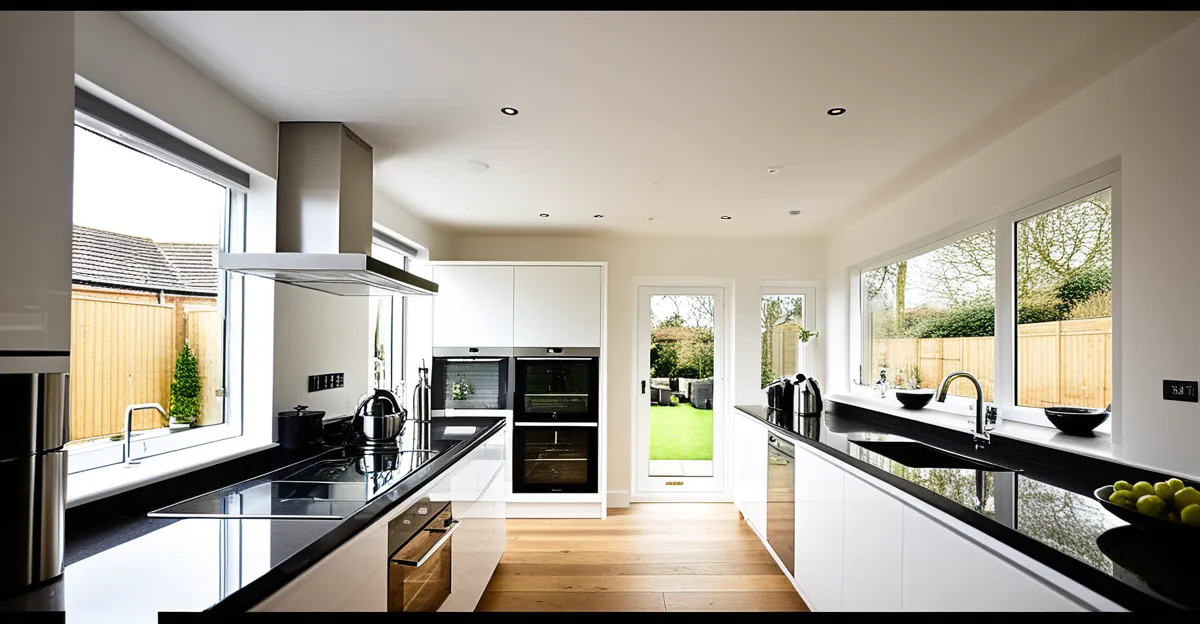Innovative Materials Shaping UK Home Design
Sustainable materials are increasingly pivotal in UK interior design, reflecting growing environmental consciousness. Homeowners and designers prioritize eco-friendly interiors by incorporating recycled elements and responsibly sourced goods. These materials not only reduce waste but also add character through unique patterns and textures.
Natural textures are essential to this movement. Surfaces such as untreated wood, stone, and organic fabrics lend warmth while maintaining a sustainable ethos. The tactile nature of these finishes offers a more authentic, earthy aesthetic that many contemporary UK homes seek to emulate.
This might interest you : What Are the Most Budget-Friendly Tips for Transforming a Cozy UK Home Interior?
Eco-friendly furnishings further define modern interiors. Designers favor items crafted from recycled metals, reclaimed timber, or innovatively sourced composites. The shift towards these sustainable options supports ethical consumption while delivering robust, beautiful materials that age gracefully.
Together, the use of recycled elements and natural textures fosters a balance between style and environmental responsibility. This combination resonates with homeowners who expect their spaces to be both aesthetically pleasing and sustainable. The trend suggests that UK home design will continue to prioritize materials that minimize environmental impact without compromising on elegance or comfort.
Topic to read : How Can Small Décor Changes Instantly Enhance Your Living Space?
Smart Technology Integration in UK Living Spaces
Smart homes are becoming a core feature of modern UK residences, reflecting a shift towards connected living that combines convenience, efficiency, and security. Home automation UK systems increasingly integrate devices controlling lighting, heating, and security, often managed remotely via smartphones or voice assistants. This seamless connectivity brings real-time control and energy-saving benefits, appealing to homeowners seeking practical solutions.
One question often asked is, How does integrated technology enhance everyday living? The precision answer: integrated technology centralizes control of various home systems, reducing the need for manual adjustments and enabling personalized settings that optimize comfort. For instance, smart thermostats learn occupants’ habits, adjusting temperature to save energy while maintaining comfort. Similarly, automated lighting can adapt to natural daylight levels or occupancy, enhancing ambiance and reducing waste.
Beyond functionality, designers focus on blending technology with home aesthetics. Smart devices now feature sleek, minimalist designs or are discreetly embedded within fixtures, maintaining the style integrity of interiors. This fusion ensures that advancements in home automation UK not only improve usability but also complement the overall design, making smart homes both practical and visually appealing. In essence, integrated technology in UK homes transforms traditional living spaces into intuitive environments tailored to individual lifestyles.
Biophilic Design and the Connection to Nature
Biophilic design UK centers on integrating natural elements like indoor plants and natural light to enhance wellbeing in design. How does biophilic design improve mental health? The precise answer: exposure to greenery and daylight reduces stress, elevates mood, and boosts cognitive function. This approach reconnects occupants with nature, crucial in dense urban UK settings.
Indoor plants serve as living décor, improving air quality while adding texture and colour. Strategically placed, they create calm zones that foster relaxation. Water features, though less common, introduce soothing sounds, reinforcing the sensory benefits of natural elements.
Maximising natural light in home layouts is another essential principle. Large windows, skylights, and open plans optimize sunlight penetration, supporting circadian rhythms and reducing reliance on artificial lighting. Views of outdoor greenery further deepen the connection to nature, promoting a sense of openness.
Biophilic design UK addresses more than aesthetics; it cultivates healthier environments. By blending greenery, daylight, and nature-inspired patterns, homes become sanctuaries that nurture mental and physical wellness. This sustainable, human-centric design reflects evolving priorities among UK homeowners seeking comfort and harmony in their living spaces.
Bold Colours and Statement Finishes in Modern UK Homes
Bold colours are transforming UK interiors by adding vibrancy and character to living spaces. The trend embraces richer, saturated palettes that inject energy and personality, moving beyond neutral or pastel tones traditionally favoured. Why do bold colours resonate in contemporary UK homes? The precise answer: they offer a dynamic way to express individuality and create impactful focal points that energize rooms.
Statement walls are a popular technique to utilise bold colours effectively. Painted walls in deep blues, emerald greens, or burnt oranges serve as eye-catching backdrops, complementing both modern minimalist and classic decor. Additionally, decorative tiles with striking patterns or textures add a tactile dimension that reinforces a statement finish’s visual drama.
Mixing contemporary palettes with traditional shades enriches the design, balancing daring hues with familiar comfort. For instance, pairing a bold statement wall with more subdued furnishings prevents overwhelming the space. Furthermore, innovative finishes like metallic paints or textured wallpapers elevate these colour choices.
In essence, expressive interiors using bold colours and statement finishes invite homeowners to take creative risks while maintaining harmony. This trend signals a shift towards more personalised, engaging UK homes that celebrate colour as a core design element.
Multifunctional Spaces and Flexible Living Solutions
Modern UK homes increasingly embrace multifunctional furniture to address limited space without sacrificing style or comfort. How do multifunctional furniture pieces improve living in small UK homes? The precise answer: they maximize usability by serving several purposes—such as beds that double as storage units or sofas that convert into workstations—optimising every square foot. This adaptability is vital in urban areas where space is at a premium.
Flexible layouts further enhance this approach. Rooms designed with movable partitions or modular elements allow homeowners to switch between work, leisure, or socialising effortlessly. Space-saving solutions, such as fold-away desks or nestling tables, provide practical alternatives that reduce clutter and maintain openness.
The priority on flexible living reflects a broader lifestyle shift, where homes must respond quickly to changing needs, especially with more people working remotely. Innovative design also considers aesthetics, ensuring versatile furnishings align seamlessly with interior styles. Ultimately, multifunctional spaces transform compact UK homes into dynamic environments that support diverse activities, increasing both function and comfort without excess spatial demands. This adaptability empowers residents to enjoy a personalised, efficient living space tailored to modern urban lifestyles.
Local Influences and Community-Inspired Design in the UK
Local influences in UK home design deeply honour British design heritage by weaving traditional craftsmanship into contemporary interiors. How does embracing local crafts enrich UK homes? The precise answer: it preserves artisanal skills while offering unique, culturally meaningful pieces that enhance character and authenticity. Supporting UK artisans ensures craftsmanship thrives amid globalisation, fostering vibrant local economies and communities.
Incorporating locally made and sourced materials strengthens this connection. Natural stone from regional quarries, handwoven textiles from nearby producers, and bespoke woodwork reflect the heritage of specific areas. This approach reduces environmental impact through shorter supply chains, aligning with sustainability goals while celebrating regional identity.
Regional styles—from rustic Cotswold aesthetics to sleek London modernism—also shape personalisation in design. Homeowners blend historical motifs or colours symbolic of their locale with current trends to create spaces rich in narrative and a strong sense of place.
Ultimately, these community-inspired methods highlight the UK’s diverse cultural fabric. By prioritizing local crafts and materials, UK interiors become personalized reflections of history and environment, bolstering pride and sustainable living in home design.



